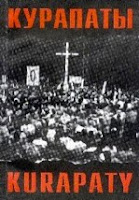
Processing Charles Mann & Jared Diamond
I’m particularly interested in the Americas before they were the Americas, that is, before the Europeans arrived and took over and pretty much ruined everything, either enslaved, murdered, raped (or all three) most of the people living in the Americas at the time. There’s a book I read a bit ago, 1491, about this very momentous period. In it, the author, Charles Mann, a science journalist, claims that past accountings of the number of people living in the Americas before the Europeans laid anchor has been off by millions. In fact, the American cities of Tenotchilcán and others were home to more people in their day than the European gems of Paris and London.
In the year 1491, the world population was roughly 500 million of whom at least 100 million lived in the New World. This is a lot more people than we were told about when we were in grade school. A whole lot more.
The book goes on to explore who they were, what happened to them, and why “traditional” “American” “history” hasn’t heretofore told their “real” story. Sorry for all of the double quotes but much of this is pretty controversial/political albeit, in my assessment, it all rings quite true.
The Spanish desecrated the New World. How? Jared Diamond attempts to explain the current power hierarchy and world order through his wicked trio of causative agents: guns, germs, and steel. Much the same scenario unfolded in the New World when the Spanish arrived although germs seemed the most virulent of the three, and ironically the least intentional.
The Spanish didn’t realize how protected they were from the diseases they inadvertently carried with them. Years of living with swine and a slew of other domesticated animals will do that for you.
The people living in the New World in 1491 had no domesticated animals but the llama and the llama only lived among people in the Andes. The bound between human and llama was certainly nothing like that between human and pig or human and horse.
Diseases are clever and highly adaptive creatures. In order to survive, many will cross the human – animal divide and change themselves through mutation to infect and affect humans. This is very much what happened in terms of the germs and diseases of the Europeans. Small pox, for instance, leapt from its original animal hosts to humans. Europeans, living as they did quite intimately with a variety of domesticated animals, either died from such diseases or developed a pretty hardy immunity to them.
These mechanisms were not at work in the New World and, thus, when the Europeans arrived their diseases frenetically unfurled themselves on a fresh, defenseless population.
An idea from Mann’s work that resonates with me is what have we, as humanity, lost in this “encounter” (what a seemingly benign label for such a horrific historic moment; is “clash” better?) between Old World and New? If the native population declined (like “encounter,” “declined” is similarly offensively bland given what it masks) by 95 percent in the first one hundred years of “contact,” what irreplaceable elements of their history, art, ideas, religion, cosmology, philosophy, and even humor have we lost?
Who were these people who built massive pyramids many of which we still don’t know their reason or rhyme or intended use? Who were these people who built such monumental works of gigantic architecture without draft animals or the wheel? Who were these people who predicted lunar eclipses and developed a calendar more accurate than our own? Who domesticated corn, potatoes, tomatoes, chocolate, coffee, and avocados? Who were these people who traveled through the Bering Strait 20,000 or 14,000 or 7,000 years ago? Or did they come across the Pacific in little reed boats? Or was it a combination of both? What languages are lost? What stories? What have we lost?

Comments